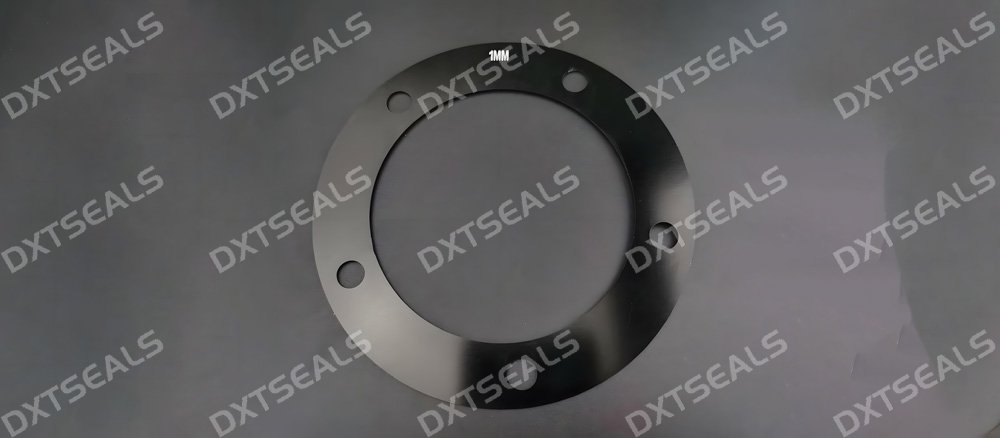Introduction
Selecting the correct flange gasket for your industrial system is crucial to ensure effective sealing and prevent leaks, system failure, or safety hazards. Flange gaskets are widely used in various industries, from oil and gas to chemical processing, and they are essential components that seal the junctions between two flanged surfaces.
However, with so many types and materials available, choosing the right flange gasket can be a daunting task. In this article, we will discuss the key factors to consider when selecting a flange gasket, helping you make an informed decision that will enhance the performance and safety of your industrial system.
1. Understand the Application Requirements
Before choosing a flange gasket, it's essential to consider the specific requirements of your application. The type of fluid, pressure, temperature, and chemical exposure can all influence the choice of gasket material.
- Pressure Rating: High-pressure systems require gaskets that can withstand extreme forces. For example, metal gaskets like spiral wound or ring-type joints (RTJ) are ideal for such conditions.
- Temperature Range: Gaskets must also perform under high or low temperatures. PTFE (Polytetrafluoroethylene) gaskets excel in both high- and low-temperature environments.
- Chemical Compatibility: If your system handles aggressive chemicals, you need a gasket that offers excellent chemical resistance. PTFE and graphite gaskets are popular in chemical industries for this reason.
- Type of Fluid: Whether it's a liquid, gas, or steam, the gasket material should be compatible with the fluid to avoid degradation or leakage.
2. Choose the Right Gasket Material
The material of the flange gasket will depend on the factors listed above. Here's a breakdown of the most commonly used materials:
a) Rubber Gaskets
Rubber gaskets are widely used in low-pressure systems. They are versatile, cost-effective, and provide good resistance to water, oils, and gases. Rubber is suitable for HVAC systems, plumbing, and automotive applications, but not ideal for extreme temperatures or highly aggressive chemicals.
b) PTFE (Polytetrafluoroethylene) Gaskets
PTFE gaskets are known for their chemical resistance and high-temperature tolerance. They are ideal for applications involving aggressive chemicals, acids, and solvents. PTFE gaskets are commonly used in the chemical, pharmaceutical, and food processing industries.
c) Metal Gaskets
Metal gaskets, including spiral wound and RTJ gaskets, are designed for high-pressure and high-temperature applications. These gaskets are used in the oil and gas, power generation, and aerospace industries, where sealing reliability is critical in extreme environments.
d) Compressed Fiber Gaskets
These gaskets are made from a blend of fibers and rubber binders, offering good sealing performance for low- to medium-pressure applications. They are commonly used in chemical plants, refineries, and power stations where moderate temperature and pressure conditions are present.
e) Graphite Gaskets
Graphite gaskets are excellent for high-temperature applications and offer chemical resistance in extreme conditions. They are commonly used in heat exchangers, steam systems, and chemical processing plants where high temperatures are a factor.
3. Consider Flange Size and Pressure Rating
It's crucial to match the gasket's size and pressure rating with the specifications of your system. Gaskets come in various sizes to fit the flange dimensions, and each material has its own pressure tolerance.
- Pressure Class: Flange gaskets are rated for different pressure classes (e.g., 150, 300, 600, etc.). Ensure that the gasket you choose can handle the pressure requirements of your system.
- Flange Size: Measure the size of the flange carefully, as a gasket that’s too small or too large will not provide an effective seal.
4. Evaluate the Operating Conditions
Beyond pressure and temperature, other factors affect gasket performance, such as vibration, movement, or exposure to abrasive materials. If your system experiences high levels of vibration or expansion and contraction, you’ll need a gasket that can accommodate those movements without losing its sealing integrity.
Metal gaskets (e.g., spira-lock gaskets) are highly durable and ideal for dynamic environments where movement or thermal cycling occurs.
5. Consider Installation and Maintenance Needs
Some flange gaskets are easier to install and maintain than others. If your system requires frequent maintenance or replacement, choosing a gasket that’s easier to install (e.g., rubber gaskets) might be a practical choice.
- Ease of Installation: Gaskets made from rubber or compressed fiber are often easier to install and remove.
- Maintenance: Regular maintenance is crucial to ensuring that your gaskets continue to perform well. PTFE and metal gaskets tend to have longer service lives in high-performance systems.
6. Cost Considerations
While performance is crucial, budget constraints should also be taken into account. Rubber and compressed fiber gaskets are often more affordable than metal or PTFE gaskets but may not be suitable for high-pressure or extreme-temperature applications.
- If cost is a significant factor, rubber gaskets are a cost-effective option for lower-pressure systems.
- For high-performance applications, consider investing in metal or PTFE gaskets despite their higher initial cost, as they offer superior durability and long-term sealing effectiveness.
7. Test and Validate Gasket Performance
Once you’ve selected the appropriate gasket material and size, it’s important to test the gasket under real operating conditions to ensure it performs as expected. Performance testing can help identify potential issues such as leakage or seal failure early on, allowing you to make adjustments before full-scale operation begins.
Conclusion
Choosing the right flange gasket is a critical decision that will directly impact the efficiency, safety, and reliability of your industrial system. By considering factors like pressure, temperature, chemical compatibility, and gasket material, you can select the ideal gasket that meets the unique needs of your application.
Always ensure that your gasket is compatible with the operating conditions of your system, and take the time to evaluate both cost and performance. With the right flange gasket in place, you can ensure a long-lasting, leak-free seal that enhances the overall performance of your system.

